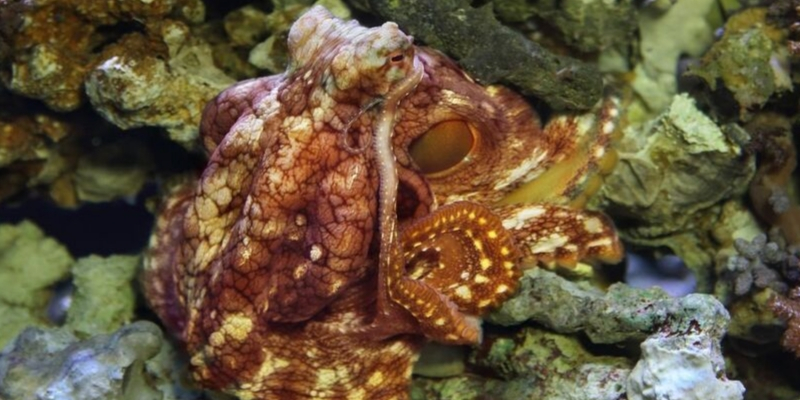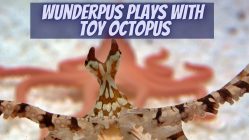When you look around you, the animals that you interact with most — including your fellow humans — are vertebrates. This means that they have an articulated internal skeleton. In other words, they have bones.
Not all animals are vertebrates. Insects and mollusks are examples of animals that you are also familiar with that are invertebrates. This means that they have no bones.
And octopus is a mollusk. Therefore, an octopus does not have any bones. That would be the short answer to the question. Of course, when it comes to the world of octopuses, digging a little deeper opens the door to an interesting world.
Why Don't Octopuses Have Bones?

The earliest ancestors to the octopuses branched off from a line of mollusks over 500 million years ago. Back then as today, mollusks were invertebrates.
They evolved in the ocean and did not rely on any rigid structure in order to develop advanced anatomical features. This is why not even the arms of an octopus require any rigid structure in order to function.
Advantages of Not Having Any Bones

Not having any bones has its advantages. This makes the octopus very malleable. This allows octopuses to squeeze into the tightest of openings. It offers them a great means for protection against predators. It also allows them to reach prey in the most difficult of locations.
Octopuses can squeeze through tiny holes
Octopuses have been known to squeeze into crab traps to grab themselves a quick snack. They have also been known to escape some aquariums by squeezing through the tiniest of openings.
How Do Octopuses Keep Their Shape?

You may wonder how an octopus is able to keep its classical octopus shape. After all, without bones, shouldn’t the octopus just be this shapeless blob?
Even though an octopus doesn’t have any bones, it does have other anatomical structures which allow it to have a defined shape. For instance, an octopus has well-developed muscle tissue. This is what provides the octopus with the framework for its overall shape. It is also what provides movement to its arms.
The skin of the octopus is another organ which provides an octopus with a structure for its shape.
The Only Rigid Parts of an Octopus

There are two suborders of octopuses. The Cirrina and the Incirrina. None have any bones. However, the Cirrina octopuses — which includes the adorable Dumbo octopus — do have a semi-rigid internal shell-like structure. This is found in their head and its purpose is to allow muscle tissue supporting lateral fins on its head to be attached. The fins aid these octopuses in swimming.
The substance that composes this inner shell is very similar to cartilage. It is only semi-rigid and it is not mineralized like a bone.
This same substance also composers the only hard part of an octopus. That is its beak. All octopuses have a beak as their mouth. Their mouth is located at the central hub from which their arms emanate.
The beak is composed of two parts which come together in a scissor-like fashion. The function of the beak is similar to that of jaws of other animals. It also can be used to pierce the shells of prey so that the octopus can inject toxin and digestive juices into them.
Who Needs Bones?
As you can see, octopuses have done very well for themselves without any bones for over 500 million years. While we could not imagine a life without our skeleton, for octopuses it is a piece of cake.












